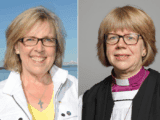I was 28 years old when my mother was diagnosed with cancer and given two months to live. Leading up to those final days, I spent many hours sitting beside her bed, my usual busyness suspended by something much larger than anything that could be contained in a calendar.
I felt honoured to be able to care for her, smoothing her brow like she’d stroked mine when I’d been a feverish child, washing her body as if it was her turn to be my infant. We existed in a strange space between this world and the next. My beginning enmeshed with her ending, the start and the finish no longer distinguishable.
You may unsubscribe from any of our newsletters at any time.
Time froze with each long silence between her breaths. Each jagged pant seemed to be her last. And then, one of those times, it was. The shift was palpable. My 63-year-old mother — her spirit, her soul, her essence, whatever it was — had gone. Her body hadn’t changed, but in that one precise instant, life left.
There is an idea in Celtic Christianity called “thin place,” when the membrane between this world and whatever lies beyond is an almost transparent veil. Years later, when my 88-year-old father hung in that thin place, I was again suspended in a slowed-down version of life. As Dad curled into himself on his deathbed, it felt like a strange reversal of birth, a completing of the circle.
But it was only when Kathleen O’Hara, my longest and closest friend, died of brain cancer at the age of 53, that I felt my truest awareness of time and its importance. I met Kathleen when I was 11 and she was 10. Our lives quickly became as entwined as the beaded rings we used to make together.
As we got older, we were always in touch, whether she lived in Toronto or Rome. We’d hoped to keep travelling together, but life happened and took us in many directions. Later, we’d say. When this is accomplished or that happens — then we would plan a big trip together. We never did.
There is no more talk of the future when someone is terminal. Nothing can be planned beyond the immediate. There is only the absolute present. The sipping of tea. Touching of hands. Learning to look at each other and really see. Every moment has the weight of ritual, something to be honoured and noted. The rhythm of the dying narrows life to the essential.
During those last days with Kathleen, I mourned for my friend but also for the opportunities lost, those moments when we’d chosen our busyness over the chance to get together. There is no question that grief tears us apart, but because of that, it sometimes allows us to discover the beauty of what was previously unseen. Death can be life’s teacher, a dark reminder that each day is a beautiful offering and our complete presence is the truest gift we can ever give.
This story first appeared in The Observer’s June 2018 edition with the title “Life lessons from death.”














